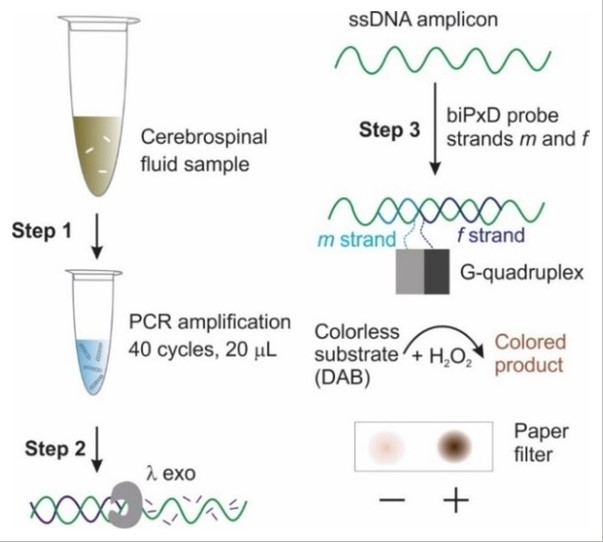Authors: Dr. Evgeny A. Kovtunov, Shkodenko L.A., Goncharova E.A., Nedorezova D.D., Prof. Sergey V. Sidorenko, Koshel E.I.,

Abstract
Rapid and cost‐efficient methods for diagnostics of infectious diseases can expedite prescription of adequate treatment, thus shortening the patients’ recovery and reducing adverse side effects. In this study, we developed a procedure for visual detection of bacterial pathogens Gram‐negative Neisseria meningitidis and Gram‐positive Streptococcus pneumoniae directly from human samples of cerebrospinal fluid (CSF). The assay uses hybridization probes that can efficiently recognize folded single‐stranded DNA analytes due to their split design. The assay includes the following stages: PCR amplification of N. meningitidis and S. pneumoniae targeted sequences; λ exonuclease treatment of the polymerase chain reaction (PCR) amplicons, and detection of the amplicons by hybridization probes with visual signal output. The assay requires 2.0 h with hands‐on time of about 40 min, and a regular PCR thermal cycler. It detects down to 10 bacteria in 2 μL of cerebrospinal fluid. The assay works for both gram‐positive and gram‐negative bacteria and does not require optimization of PCR conditions. This development creates a basis for the point‐of‐care diagnostics of bacterial meningitis with visual signal output.
DOI: